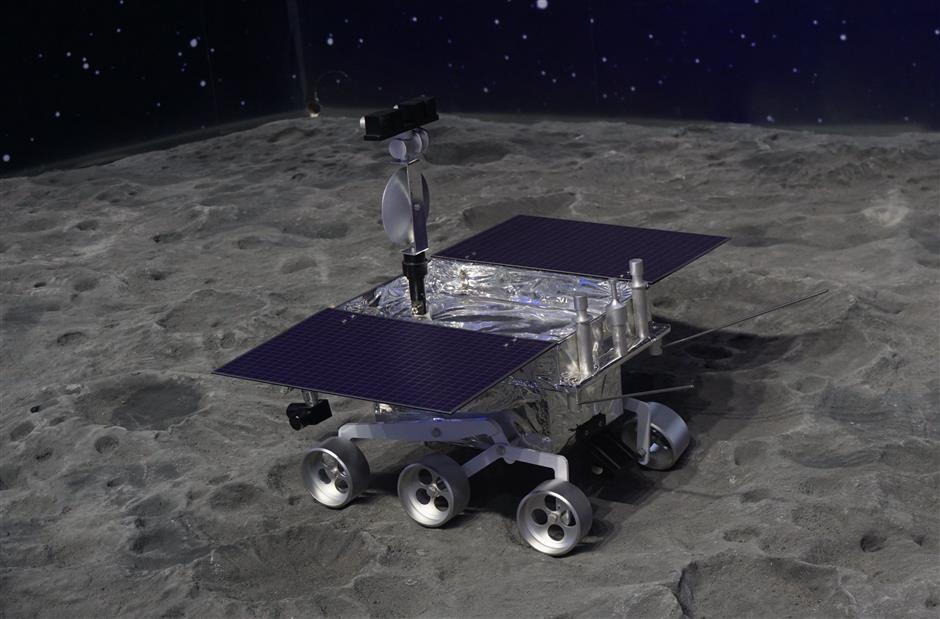Space and friendship explored by lunar probe

A model of China's robotic lunar probe Chang'e-4 is displayed during the 12th China International Aviation and Aerospace Exhibition, also known as Airshow China 2018, in Zhuhai City, south China's Guangdong Province, on November 7, 2018.
The Chang’e-4 mission, which accomplished the first soft landing on the far side of the moon, embodies China’s hopes of combining human wisdom with future space exploration.
Chang’e-4 is carrying four payloads developed by the Netherlands, Germany, Sweden and Saudi Arabia.
“International cooperation is the future of lunar exploration,” said Wu Weiren, chief designer of China’s lunar exploration program. “The participating countries will share the costs, risks and achievements, and learn from each other. We hope to have more international cooperation.”
A neutron radiation detector aboard the lander, developed by Germany, and a neutral atom detector on the rover, developed by Sweden, have both been switched on for test operations, said the China National Space Administration.
The radioisotope heat source, a collaboration between Chinese and Russian scientists, will support the probe through the lunar night, each equivalent to about 14 days on the Earth, when the temperature can fall to minus 180 degrees Celsius.
A ground station that China has built in Argentina has played an important role in the monitoring and control of the mission, and ground stations run by the European Space Agency will also offer support.
The scientists of the Lunar Reconnaissance Orbiter of NASA have also cooperated with the team of the Chang’e-4 mission to study the landing of the Chang’e-4 probe, according to CNSA.
The US side has offered the orbital data of LRO and the Chinese side has provided the landing timing and location, said CNSA.
Ping Jinsong, a researcher with the National Astronomical Observatories of China, cooperated with Dutch scientists on the low-frequency radio detector on the Queqiao relay satellite. He said scientists overcame difficulties in language, culture, law and habits, and accumulated much experience through cooperation.
Johan Koehler, head of Solar System Science and Space Situational Awareness at the Swedish National Space Agency, said no measurement had ever been done of the far side of the moon.
“It is a great achievement by China, and we are very happy to be a part of it,” he said. “Our payload on the rover will measure the interaction of the solar wind with the lunar surface.”
Robert Wimmer-Schweingruber, professor of the Institute of Experimental and Applied Physics at Germany’s Kiel University, participated in the development of the neutron radiation detector, installed on the lander of Chang’e-4.
“Our instrument measures the dose rate of the radiation which astronauts would experience on the moon. And that’s something important because once astronauts come back from the moon, that’s the only risk that remains,” he said.
The instrument also measures thermal neutrons, which may help detect subsurface water. It was the first such instrument operating on the moon.
“I think one of the beauties of space science is that we do cooperate internationally,” he said. “Space science to me is something important, also as a message of peace worldwide.”















